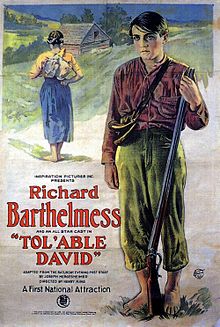
Richard Semler Barthelmess was an American film actor, principally of the Hollywood silent era. He starred opposite Lillian Gish in D. W. Griffith's Broken Blossoms (1919) and Way Down East (1920) and was among the founders of the Academy of Motion Picture Arts and Sciences in 1927. The following year, he was nominated for the Academy Award for Best Actor for two films: The Patent Leather Kid and The Noose.

Safety Last! is a 1923 American silent romantic-comedy film starring Harold Lloyd. It includes one of the most famous images from the silent-film era: Lloyd clutching the hands of a large clock as he dangles from the outside of a skyscraper above moving traffic. The film was highly successful and critically hailed, and it cemented Lloyd's status as a major figure in early motion pictures. It is still popular at revivals, and it is viewed today as one of the great film comedies.

Ben-Hur: A Tale of the Christ is a 1925 American silent epic adventure-drama film directed by Fred Niblo and written by June Mathis based on the 1880 novel Ben-Hur: A Tale of the Christ by General Lew Wallace. Starring Ramon Novarro as the title character, the film is the first feature-length adaptation of the novel and second overall, following the 1907 short.
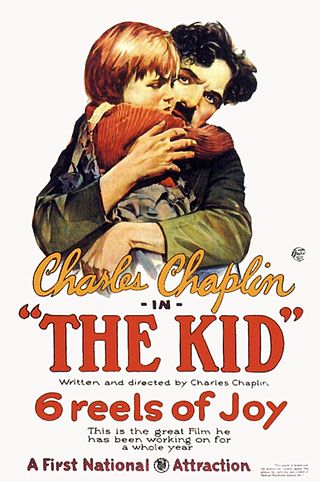
The Kid is a 1921 American silent comedy-drama film written, produced, directed by and starring Charlie Chaplin, and features Jackie Coogan as his foundling baby, adopted son and sidekick. This was Chaplin's first full-length film as a director. It was a huge success and was the second-highest-grossing film in 1921. Now considered one of the greatest films of the silent era, it was selected for preservation in the United States National Film Registry by the Library of Congress in 2011.

Joseph Hergesheimer was an American writer of the early 20th century known for his naturalistic novels of decadent life amongst the very wealthy.

The Son of the Sheik is a 1926 American silent adventure drama film directed by George Fitzmaurice and starring Rudolph Valentino and Vilma Bánky. The film is based on the 1925 romance novel The Sons of the Sheik by Edith Maude Hull, and is a sequel to the 1921 hit film The Sheik, which also stars Rudolph Valentino. The Son of the Sheik is Valentino's final film and went into general release nearly two weeks after his death from peritonitis at the age of 31.
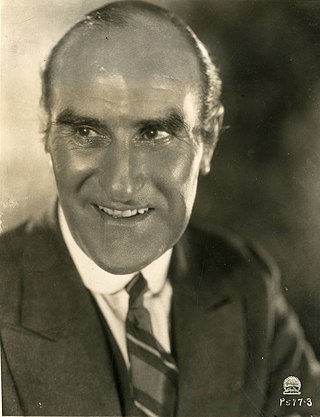
Ernest Torrence was a Scottish film character actor who appeared in many Hollywood films, including Broken Chains (1922) with Colleen Moore, Mantrap (1926) with Clara Bow and Fighting Caravans (1931) with Gary Cooper and Lili Damita. A towering figure, Torrence frequently played cold-eyed and imposing villains.
Ralph Yearsley was a British-born character actor who worked in Hollywood films.
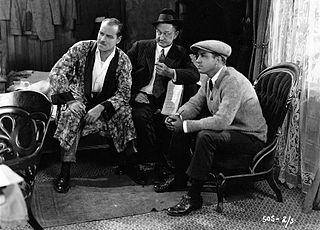
Charles Edgar Schoenbaum A. S. C. was an American cinematographer. His known film credits began in 1917--although he probably had earlier films--and ended with his untimely death from cancer in 1951. He was nominated for an Academy Award in 1949 for his work on Little Women.

Gladys Hulette was an American silent film actress from Arcade, New York, United States. Her career began in the early years of silent movies and continued until the mid-1930s. She first performed on stage at the age of three and on screen when she was seven years old. Hulette was also a talented artist. Her mother was an opera star.
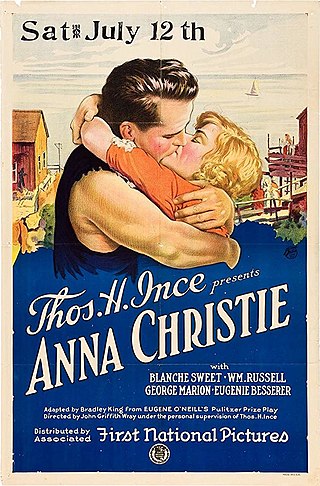
Anna Christie is a 1923 American silent drama film based on the 1921 play by Eugene O'Neill and starring Blanche Sweet and William Russell.

The Love Light is a 1921 American silent drama film starring Mary Pickford. The film was written and directed by Frances Marion. Pickford selected the story as she wanted to play an adult and not another adolescent role.
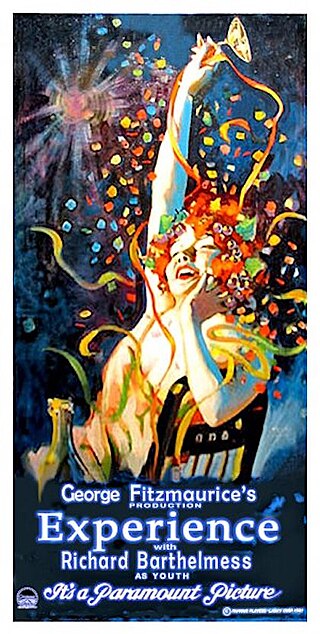
Experience is a 1921 American silent morality drama film produced by Famous Players–Lasky and distributed by Paramount Pictures. The allegorical film was directed by George Fitzmaurice and starred Richard Barthelmess. It was based on George V. Hobart's successful 1914 Broadway play of the same name. It was the film debut of Lilyan Tashman.
The Enchanted Cottage is a 1924 American silent drama film directed by John S. Robertson based upon a 1923 play by Arthur Wing Pinero.
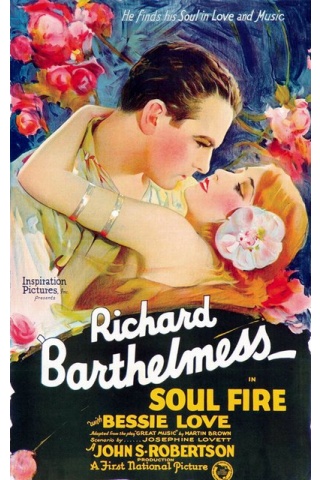
Soul-Fire is a 1925 American silent drama film starring Richard Barthelmess and Bessie Love. It was directed by John S. Robertson and was based on the Broadway production Great Music (1924) by Martin Brown.

Humoresque is a 1920 American silent drama film produced by Cosmopolitan Productions, released by Famous Players–Lasky and Paramount Pictures, and was directed by Frank Borzage from a 1919 short story by Fannie Hurst and script or scenario by Frances Marion.

Weary River is a 1929 American sound part-talkie romantic drama film directed by Frank Lloyd and starring Richard Barthelmess, Betty Compson, and William Holden. The film was produced and distributed by First National Pictures. In addition to sequences with audible dialogue or talking sequences, the film features a synchronized musical score, singing and sound effects along with English intertitles. The soundtrack was recorded using the Vitaphone sound-on-disc system.

Just Suppose is a 1926 American silent drama film produced by and starring Richard Barthelmess with distribution through First National Pictures. Kenneth Webb directed Barthelmess and young Lois Moran star. The film is based on the 1920 Broadway play Just Suppose by Albert E. Thomas.

Tol'able David is a 1930 American pre-Code drama film directed by John G. Blystone and produced and released by Columbia Pictures. It is a remake of the 1921 silent film Tol'able David, which starred Richard Barthelmess and Ernest Torrence.
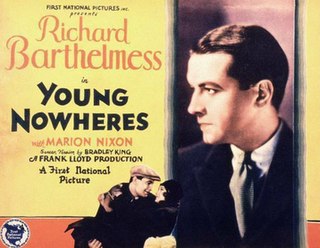
Young Nowheres is a 1929 American drama film directed by Frank Lloyd and starring Richard Barthelmess, Marian Nixon and Bert Roach. It was produced and released by First National Pictures with a Vitaphone soundtrack in both silent and sound versions.
